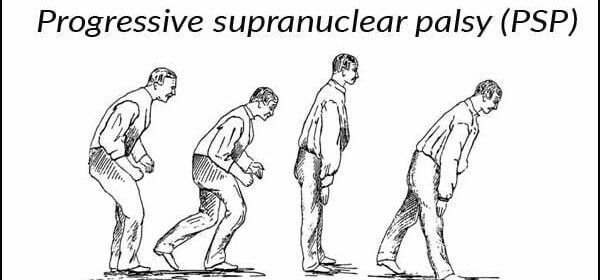Progressive Supranuclear Palsy: What Is It and What Is Being Done?

ELIZABETH CONNER – Often misdiagnosed as other degenerative brain disorders such as Alzheimer’s, Progressive Supranuclear Palsy is a rare brain disease that affects every 1 in 10,000 people in our population. This disease falls under the Parkinson’s umbrella, as the symptoms of PSP, such as unexplained falls, align with those of Parkinson’s in the early stages of diagnosis. In fact, this disease was not recognized as its own until the year 1963. Although the motor function is impaired in PSP patients, mental impairment as one of its symptoms is what sets PSP apart from other diseases in its Parkinson’s-associated category. Some other common symptoms of PSP include poor balance, frequent unexplained falls, the rigidity of movement, and difficulty finding words. As the disease progresses, the intensity of symptoms increases.
Although PSP is not inheritable, its causes have been linked to mutations in the tau gene on Chromosome 17, as all cases of PSP present the H1 Haplotype variation of this gene. Every person with a PSP diagnosis has four repeats within its repeat domain (a specific sequence of amino acids) of the tau protein; however, some patients with four repeats never present with nerve degeneration meaning the exact determination of what causes nerve degeneration is inconclusive. Specifically, the tau protein relates to the structure of cells. The tau protein has many unique conformations; depending on the environment, tau forms a unique shape that then other tau proteins mimic. However, certain conformations of tau can not be properly processed by the neuron, which damages the neuron attempting to process tau. This further damages subsequent neurons in the postsynaptic pathway. Neurons in charge of eye control are particularly vulnerable to this improper digestion of tau as signals of the eye.
A defining feature of PSP is its impact on eye control. In comparison to Parkinson’s, in which patients struggle with excessive watering or uncontrolled blinking, PSP patients find it difficult to move the eye vertically. On the other hand, tremors characterizing diseases like Parkinson’s are only found in 10% of PSP patients. As this disease progresses, swallow control is significantly impacted, and feeding tubes may be introduced to the patients.
The diagnosis of Progressive Supranuclear Palsy is also complex. As said, the symptoms of PSP mimic that of Parkinson’s and other degenerative diseases. Overall, the diagnosis is a timely process that can take many years, but MRI images depicting the shrinkage of the brain stem help to characterize the disease. Under a microscope, the tissues of a PSP patient are thin near the midbrain and thin in the depths of the nuclei as well.
Unfortunately, no drugs are particularly effective for the treatment of PSP. Certain chemicals in the brain affected by PSP have no significant mechanism by which they are replenished. Today, research focuses heavily on the buildup of the tau protein and its implications. Infusions of antibodies against tau and molecules that aggregate the buildup of tau have shown promising results in labs, and the mechanism in which to test this infusion in humans is in the planning stages. Overall, despite being related to Parkinson’s disease, Progressive Supranuclear Palsy is both unique and devastating due to its defining features which set it apart from other neurodegenerative disorders.
Copy editor – Yeongseo Son and Alina Baiju
